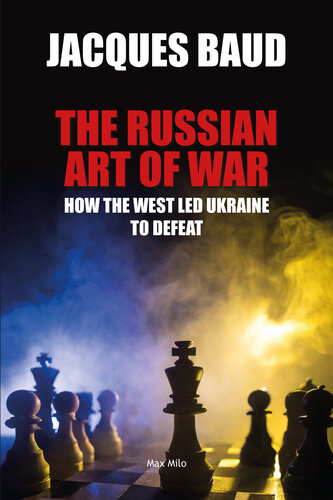Wakhan
The Wakhan Quadrangle became an arena of colonial competition when four powers - Afghanistan, China, Great Britain and Russia - struggled for dominance in a remote mountain region where only scattered communities lived in a challenging environment - called the "Great Game". Prior to this, various international travellers had been sent out, commissioned to record routes, military details and strategic information for the respective parties in the contest. Among the explorers were so-called indigenous intermediaries who were trained in measuring geodetic parameters and who noted down their observations about the customs, culture and economy of the people. They were expected to be knowledgeable in terms of linguistic skills and cultural practices and were less likely than their colonial masters to arouse suspicion. Munshi Abdul Rahim was an explorer who was sent to Wakhan and Badakhshan in 1879-1880 by the first British Political Agent in Gilgit. His report, reprinted in facsimile, is the centerpiece of this book. It was written during a crucial period for Wakhan that resulted in the imperial division of the formerly independent principality into two parts and the flight and migration of a large share of its inhabitants. His account is preceded by an introduction to the "Great Game" and its implications for the Central Asian interface. Munshi Abdul Rahim's narrative serves to discuss the function of providers of 'political' and 'non-political' information, i.e. the distinction between exploration and espionage from colonial times to the present day. The comments and interpretations are embedded in archival research and fieldwork done by the author over 40 years.
Table of contents :
Cover
Titel
Imprint
Contens
Avant-propos
Travelogues from forgotten visitors
Introducing actors and interests
Narrowing down the context – Munshi Abdul Rahim’s mission
Contents and comments
The immediate aftermath and long-lasting effects
Transliteration and transcription
Copyright
Introduction
From river source to geopolitical pivot – The great game on the Oxus
Dominance and restructuring – 40 years that shaped Central Asia
Men on the ground – an Anglo-Russian contest
Gambling in the great game – a multi-tier playground
Intellectual support during the Great Game
Endgame in the Wakhan quadrangle
Missions with an aim
From Kashgar to Wakhan
Colonial masters depending on indigenous intermediaries – collaboration in map-making and reconnaissance
Muslim trackers in trans-frontier Central Asia
A ‘skeleton map’
John Biddulph – commanding officer and mastermind
Mukhtar Shah and Munshi Abdul Rahim – two travellers on their way to Badakhshan
Munshi Abdul Rahim’s journey revisited – from colonial ignorance to present-day reception
Munshi Abdul Rahim’s visit at a crucial time for wakhan and Badakhshan
Topics covered and highlighted in Munshi Abdul Rahim’s report
– religion
– Ceremonies on the birth of a son
– Marriage ceremonies
– On death
– Education
– Built environment
– Administrative division
– Agriculture
– Animal husbandry
– Authority and rule
– Wakhan within Badakhshan
– Ishkashim
– Zebak
– Warduj
– Faizabad
– On the holy mantle
– Sale of slaves
– Manufactures of Badakhshan
– Mineral wealth and other produce
– Indian goods in Badakhshan
– Russian goods in Badakhshan
– Bokharan goods
– Goods from Qataghan and Kunduz
– Products from Chitral
– Artisans and craftsmen from Faizabad
– Khamchán, the ancient capital
– On the tribes of Badakshán
– The tribe of Hazáras
– On religion
– On learning
– On house-building
– On habits of hospitality
– Habits of the inhabitants of Badakhshan
– On giving and taking girls in marriage
– Pride of race of the tribes
– On clothing
– Clothing of women
– Appearance and height of men
– On the men’s labour
– On the women’s labour
– Sickness in Badakhshan
– On cattle-rearing and wealth
– Numbers of population
– On the climate of Badakhshan
– Table of descent of the Mirs of Badakhshan
– Detailed account of the sons of the Mirs of Badakhshan
– Relationship and kinsmanship of the Mirs of Badakhshan
– Place of flight or refuge of the Mirs of Badakhshan
– Dependence of the Mir of Shughnan on Badakhshan
– History of Badakhshan
– Ancient revenue at the time of the Chughtai Kings and others
– The expenditure of the Mir on his house and
army
– Habits of the Mir
– People of rank
– On the treatment of guests and vakils by the Mir
– Account of two or three generations of the Mirs of Qataghan
– Route descriptions
– General remarks on the Yarkhun Valley
Comment on the narrative
Journey to Badakshan with report to Badakshan and Wakhan by Munshi Abdul Rahim
Sequel
Wakhan and its heritage in multi-local situations
Exodus of Mir ali Mardan Shah
Options for returning to Wakhan
Wakhan divided – people on the move
Community division along the Panj
The fate and future of the pīr
Routes across the Hindukush, Pamirs, Karakoram and Himalaya
The wakhan quadrangle in transition – links between Afghanistan, British India and Kashgaria
Chitral-Wakhan route – nexus with trade from Badakhshan
Separate infrastructures – roads to development
Contemporary life in Badakhshan
Faizabad – the urban centre
Adaptation in new abodes – mobility, migration and integration
Rajon Ishkashim
Sarikol
Gojal
Cross-boundary communication and exchange
Strategic importance today
Postscript
The fate of indigenous intermediaries
exploration and intelligence collection in the Wakhan quadrangle – yesterday and today
Anthropological, botanical and geographical exploration
Glossary
Pronunciation
Bibliography
Archival collections
Published sources
Map bibliography
Index



















Comments
Post a Comment
Only substantial and serious comments will be accepted .